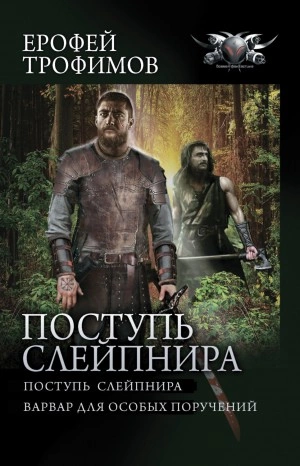Шрифт:
Интервал:
Закладка:
30
Edward H. Cornell and C. Donald Heth (1983). Report of a missing child // Alberta Psychology 12. Р. 5–7. Reprinted in Kenneth Hill, ed., Lost Person Behavior. Canada National Search and Rescue Secretariat, 1999. Ch. 4.
31
Первая публикация исследования Корнелла и Хета: Edward H. Cornell and C. Donald Heth (1996). Distance traveled during urban and suburban walks led by 3– to 12-year-olds: tables for search managers // Response! The Journal of the National Association for Search and Rescue 15. Р. 6–9. Более подробно: Edward H. Cornell and C. Donald Heth (2006). Home range and the development of children’s way finding // Advances in Child Development and Behavior. 34. Р. 173–206.
32
Robert Macfarlane. Landmarks. Hamish Hamilton, 2015. Р. 315.
33
Roger Hart. Children’s Experience of Place. Irvington, 1979. Р. 73.
34
Helen Woolley and Elizabeth Griffin (2015). Decreasing experiences of home range, outdoor spaces, activities and companions: changes across three generations in Sheffield in north England // Children’s Geographies 13 (6). Р. 677–691; Lia Karsten (2005). It all used to be better? Different generations on 143 continuity and change in urban children’s daily use of space // Children’s Geographies 3 (3). Р. 275–290; James Spilsbury (2005). “We don’t really get to go out in the front yard” – children’s home range and neighbourhood violence // Children’s Geographies 3 (1). Р. 79–99; Margrete Skår & Erling Krogh (2009). Changes in children’s nature-based experiences near home: from spontaneous play to adult-controlled, planned and organised activities // Children’s Geographies. 7 (3). Р. 339–354.
35
Ben Shaw, Ben Watson, Bjorn Frauendienst, Andrea Redecker, Tim Jones and Mayer Hillman. Children’s independent mobility: a comparative study in England and Germany, 1971–2010. Policy Studies Institute, 2013.
36
Childhood and Nature: A survey on changing relationships with nature across generations. Natural England, 2009.
37
Helen Woolley and Elizabeth Griffin (2015).
38
Департамент транспорта и дорожной статистики.
39
The IKEA Play Report 2015.
40
Служба национальной статистики. Особое внимание уделено насильственным преступлениям и изнасилованиям.
41
David Finkelhor. Five Myths about Missing Children // Washington Post, 10 May 2013. Его последние исследования подтверждают эту тенденцию.
42
Play Report 2010. Издатель Family, Kids and Youth, Research Now, IKEA. С выводами можно познакомиться здесь: http://www.fairplayforchildren.org/pdf/1280152791.pdf
43
Цит. по: Грей П. Свобода учиться. Игра против школы / Пер. с англ. Т. Землеруб. М.: Манн, Иванов и Фербер, 2016.
44
Peter Gray. Free to Learn: Why unleashing the instinct to play will make our children happier, more self-reliant, and better students for life. Basic Books, 2013. Р. 5.
45
Eva Neidhardt and Michael Popp (2012). Activity effects on path integration tasks for children in different environments // Cyrill Stachniss, Kerstin Schill and David Uttal, eds. Proceedings of the Spatial Cognition VIII international conference, Kloster Seeon, Germany, 2012. Р. 210–219.
46
A. Coutrot et al. (2018). Cities have a negative impact on navigation ability: Evidence from mass online assessment via Sea Hero Quest // представлено на ежегодной встрече Общества нейронаук, Сан-Диего, 3–7 ноября 2018 г. Такая разница в способностях к навигации справедлива для всех стран мира.
47
Rachel Maiss and Susan Handy (2011). Bicycling and spatial knowledge in children: an exploratory study in Davis, California // Children, Youth and Environments 21 (2). Р. 100–117.
48
Antonella Rissotto and Francesco Tonucci (2002). Freedom of movement and environmental knowledge in elementary school children // Journal of Environmental Psychology 22. Р. 65–77. См. также исследование Брюса Эппльярда из Государственного университета Сан-Диего: http://www.bruceappleyard.com
49
Mariah G. Schug (2016). Geographical cues and developmental exposure: navigational style, wayfinding anxiety, and childhood experience in the Faroe Islands // Human Nature 27. Р. 68–81.
50
Roger Hart. Children’s Experience of Place. Irvington, 1979. Р. 63.
51
Rebecca Solnit. A Field Guide to Getting Lost. Viking, 2005. Р. 6.
52
G. Stanley Hall (1897). A study of fears // American Journal of Psychology. 8 (2). Р. 147–163; Robert D. Bixler et al. (1994). Observed fears and discomforts among urban students on field trips to wildland areas // Journal of Environmental Education. 26 (1). Р. 24–33.
53
Kenneth Hill. The Psychology of Lost // Kenneth Hill, ed. Lost Person Behavior. Canada National Search and Rescue Secretariat, 1999. Р. 11.
54
Jean Piaget and Barbel Inhelder. The Child’s Conception of Space. Routledge and Kegan Paul, 1956.
55
C. Spencer and K. Gee (2012). Environmental Cognition // V. S. Ramachandran, ed. Encyclopedia of Human Behavior. Academic Press. Р. 46–53.
56
Roger Hart (1979). Р. 115; Ford Burles et al. (2019). The emergence of cognitive maps for spatial navigation in 7– to 10-year-old children // Child Development, https://doi.org/10.1111/cdev.13285
57
Terence Lee (1957). On the relation between the school journey and social and emotional adjustment in rural infant children // British Journal of Educational Psychology. 27. Р. 100–114.
58
Veronique D. Bohbot et al. (2012). Virtual navigation strategies from childhood to senescence: evidence for changes across the lifespan // Frontiers in Aging Neuroscience 4, article 28.
59
Roger Hart (2002). Containing children: some lessons on
- Наблюдения и озарения или Как физики выявляют законы природы - Марк Перельман - Прочая научная литература
- Смысл существования человека - Эдвард Уилсон - Прочая научная литература
- Лестница жизни: десять величайших изобретений эволюции - Ник Лэйн - Биология
- Как запомнить все! Секреты чемпиона мира по мнемотехнике - Борис Конрад - Прочая научная литература
- Тайны Атлантиды - Алим Войцеховский - Прочая научная литература
- На 100 лет вперед. Искусство долгосрочного мышления, или Как человечество разучилось думать о будущем - Роман Кржнарик - Прочая научная литература / Обществознание / Публицистика
- Английский для русских. Курс английской разговорной речи - Наталья Караванова - Прочая научная литература
- Осьминоги, каракатицы, адские вампиры. 500 миллионов лет истории головоногих моллюсков - Данна Стоф - Биология
- Нейротон. Занимательные истории о нервном импульсе - Александр Иванович Волошин - Биология / Периодические издания
- Бегство от одиночества - Евгений Панов - Биология







